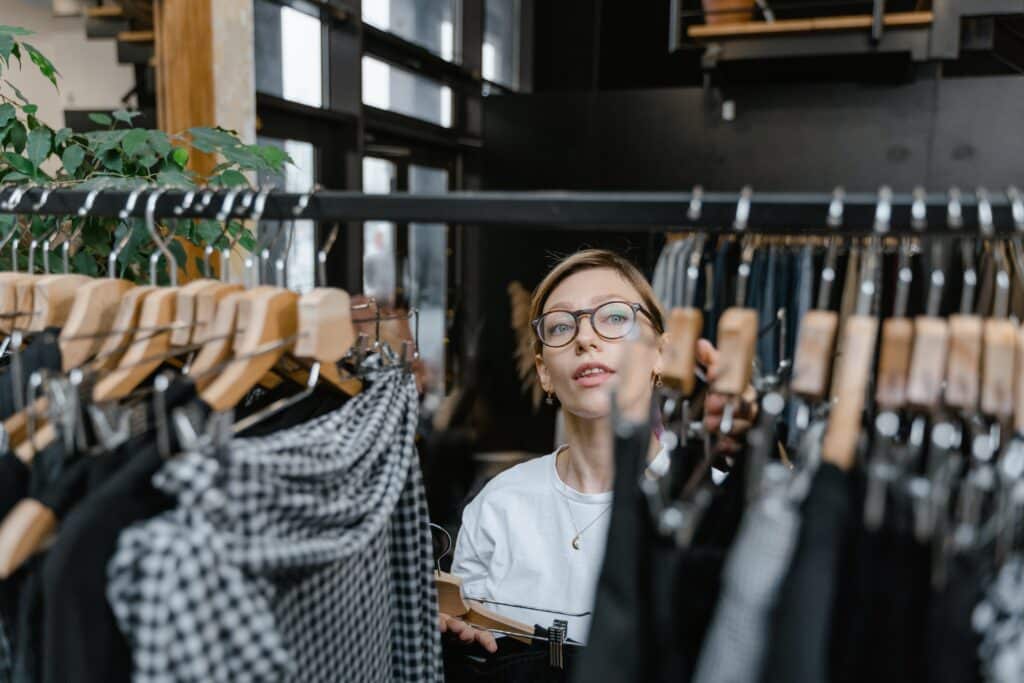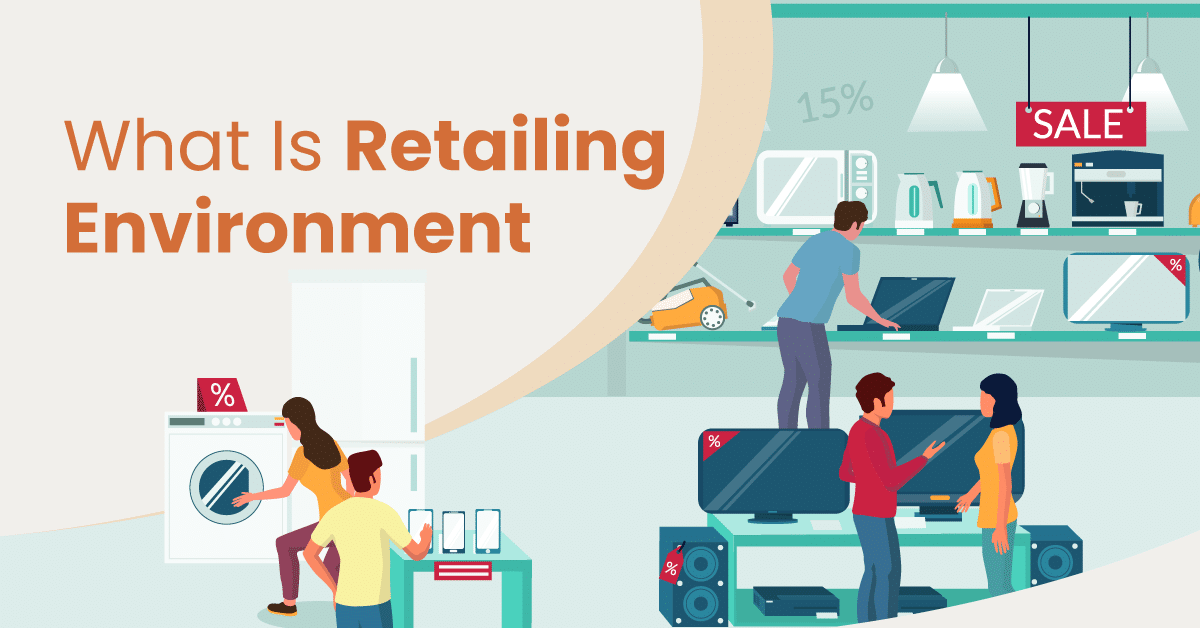
Brick-and-mortar stores constantly seek ways to entice customers to get them through their doors. One key strategy that has gained significant traction is the concept of the retail environment.
The retail environment plays a large part in shaping the customer’s experience. Considering 86% of customers are willing to pay more for a better shopping experience, the retail environment is an indispensable element of brick-and-mortar retail.
This article explores the various elements of the retail environment and how to improve each of these elements to draw more customers to your store.
What Is Retail Environment?
The retail environment is the physical and psychological space where businesses interact with customers to sell products or services. It encompasses the store’s layout, ambiance, and design. Factors like lighting, music, and decor collectively create a specific atmosphere.
The retail environment also encompasses customer service, staff interactions, and the overall experience provided by the retailer. It’s a critical aspect of retail strategy, as a well-crafted retail environment influences customer satisfaction, sales, and brand perception.
In a world where online shopping continues to grow, the retail environment is the brick-and-mortar store’s secret weapon.
The 10 Key Elements of the Retail Environment
While many items are factors in any retail store’s environment, here are 10 of the most important that every retailer should consider.
The Window Display: A Glimpse of What’s Inside
Don’t underestimate the power of a well-curated window display. It’s your storefront’s first impression and should pique curiosity and invite customers to step inside. A window display enhances the retail environment by attracting potential customers with a visually appealing design.
Displays should inspire shoppers, showcasing featured products and seasonal items while creating an emotional connection. Use the storefront to set the tone for your brand and product offerings.
Atmospherics: Setting the Mood
Atmospherics play a pivotal role in shaping the retail environment. Work to create an environment that resonates with your inventory and style. For instance, if you plan on opening a bustling coffee shop, you may opt for lively music to match the energy of customers seeking a caffeine fix.
“We found that the music in our store isn’t just background noise; it’s the heartbeat of our sales. The right tunes create an atmosphere where customers linger, connect with our products, and often leave with a little extra joy in their bags.”
John W. – Shadyside Vintage
On the other hand, if you want to start a tranquil wine store, you might prefer soothing melodies to enhance the shopping experience. Similarly, clothing brands often use fast-paced music to infuse a sense of excitement and energy for a night out.
Pick the vibe that corresponds with your shop’s aesthetic. Don’t be afraid to experiment!
Calming Lighting: Beyond Basic Atmospherics
Lighting is another critical element of the retail environment. Properly executed lighting highlights products, creates a welcoming ambiance, and even influences customers’ moods.
Bright, well-lit spaces convey a sense of spaciousness and cleanliness, whereas dimmer, more intimate lighting might suit a boutique perfumery. Remember to pay attention to customer reactions to your store. You can adjust your lighting from there to make sense for all shoppers.

Visual Merchandising: Promos and Displays
Visual merchandising is a strategic retail practice that involves arranging products and displays to enhance the overall shopping experience for customers. This artful combination of design and psychology is crucial in influencing consumer behavior and creating a memorable brand impression in the competitive retail landscape.
Strategically organizing your store aids in aesthetics as well as cross-selling related merchandise. Ikea, for example, takes this to the next level with its fully furnished room displays. Smaller retailers can implement a similar strategy.
Pay attention to color schemes and themes. Group products together that make sense.
The Art of Layout: Floor Plan Design
Floor layouts significantly impact the retail environment as they dictate the flow of customer traffic and influence shopping behavior. An open, spacious layout with clear sightlines encourages exploration and impulse purchases, while cramped or cluttered spaces may deter customers.
Strategic placement of product displays and checkout counters can influence product visibility and accessibility. Finally, occasionally changing your floor plan to keep things fresh is a great idea.
Effective Signage: Navigational Aids
Clear and well-placed signage is crucial in guiding customers through the store. Signs should mark sections, highlight products, and display pricing information.
Electronic shelf labels streamline this process, ensuring accurate and up-to-date pricing. Well-executed signage fosters a sense of professionalism and organization, instilling confidence in customers and making them more likely to return to the store.
Retail Staff: Enhancers of the Environment
Your staff members are an integral part of the retail environment. They are vital to making a hospitable impression on customers entering your shop.
“The staff is the glue that holds everything together. They are not just employees; they are the heart and soul of our store. Their dedication, knowledge, and genuine care for our customers are what truly make our retail environment special.”
Cherice W. – Butterfly Bakery
Training employees to be friendly, knowledgeable about the store’s layout and products, and capable problem solvers will significantly enhance the shopping experience. A welcoming smile and a willingness to assist goes a long way in making customers feel at ease.
Engaging All Senses: Experiential Retail
Appealing to all the senses is a powerful tool in shaping the retail environment. If you own a coffee shop, let the aroma of freshly roasted beans waft out into the street. If your store sells candles, consider burning one to create a subtle, inviting scent that lingers in the air.
Allowing customers to interact with the merchandise through sampling, handling, trying on, or tasting draws them in and gives them a reason to shop in person. This tactile engagement of experiential retail turns browsers into buyers.
Temperature Control: Striking a Balance
While your retail employees work inside all day, other customers come in from frozen sidewalks or blazing sun, depending on the season. It’s essential to consider the comfort of your customers first. Nobody wants to shop while sweating or shivering.
Strive to maintain a balanced climate that accommodates shoppers coming in from outside. The idea is for clientele to spend as much time as possible in your store to increase engagement and revenue.

Special Events and Experiences: The Ultimate Draw
Hosting special events and experiences can be a major draw for consumers. Interactive and engaging activities like workshops and guest appearances further enrich the shopping environment, fostering customer loyalty and increasing sales.
Whether it’s a wine-tasting event at your wine store or a live coffee-roasting demonstration in your cafe, these experiences create a buzz and keep customers returning for more. They create lasting memories that shoppers associate with your retail space.
KORONA POS is very user-friendly. You can customize the interface to conform to your business needs. Customer Service is in the United States, always accessible, and always awesome. We love that we can fit it into our scale of business and grow with it.
-Darlene P.
Keep Your Checkout Fast and Easy with KORONA POS
A quick and efficient checkout experience is essential for a positive retail environment. KORONA POS equips retailers with the best tools to handle busy times and demanding customers effectively.
From comprehensive inventory management to intuitive cashier dashboards, our cloud-based software is built for the future of retail. Plus, we offer 24/7 emergency customer support, so you never have to worry about downtime.
A better point of sale fosters a better retail environment. Click the link below to learn how KORONA POS can take your retail business to the next level.
FAQs: Retail Environment
The retail environment is important because it directly shapes the overall shopping experience for customers. A well-designed and customer-friendly retail space attracts shoppers, enhances their comfort, and encourages longer stays. All of this increases sales and customer loyalty.
Examples of the retail atmosphere include in-store music and lighting, layout and design, scents, and staff behavior. The choice of music can create a relaxing or energetic atmosphere, while lighting can affect the mood and highlight specific products. The store’s layout and design convey a sense of luxury or affordability; even the subtle use of scents can evoke emotions and memories.













